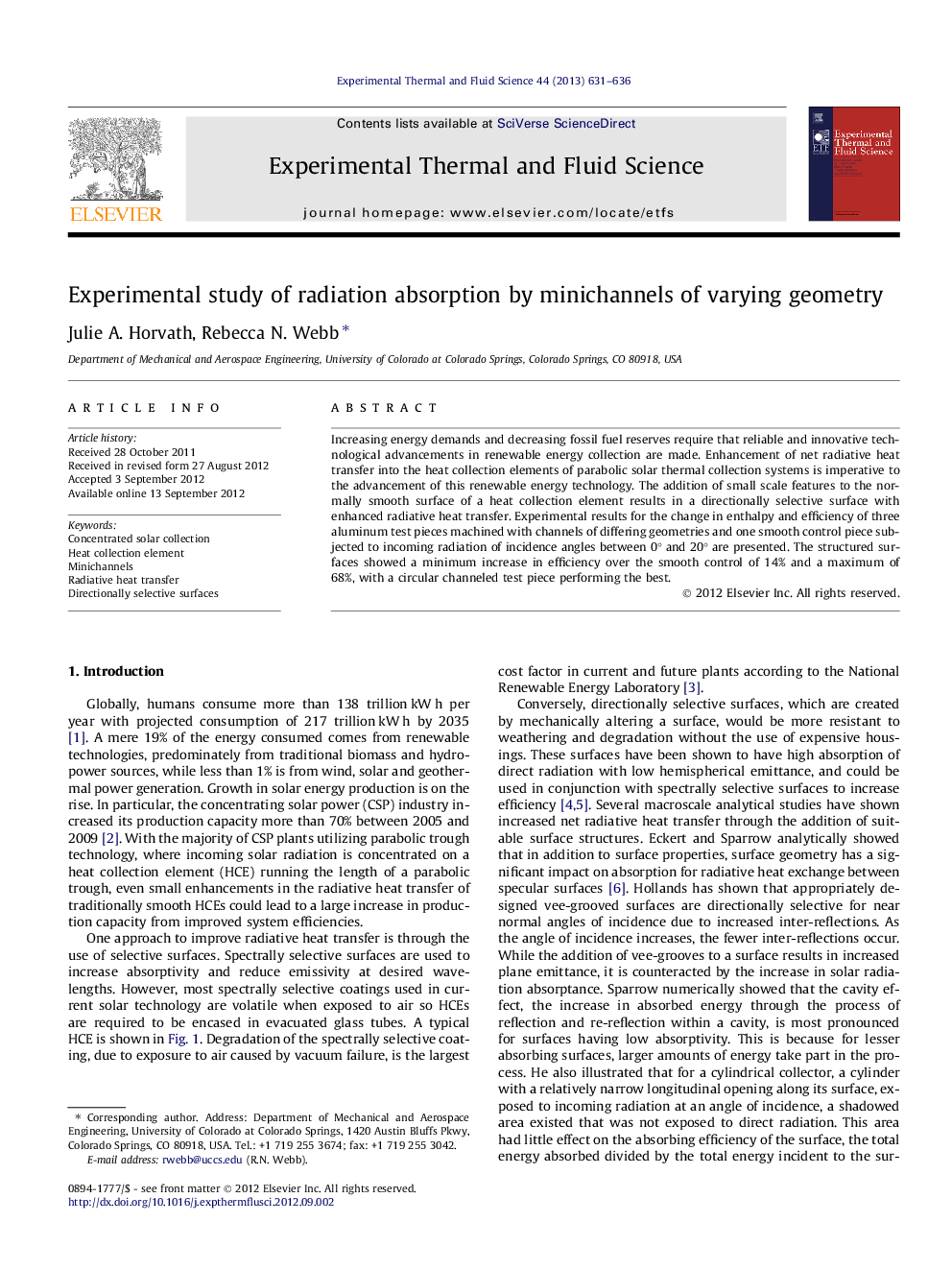| Article ID | Journal | Published Year | Pages | File Type |
|---|---|---|---|---|
| 651552 | Experimental Thermal and Fluid Science | 2013 | 6 Pages |
Increasing energy demands and decreasing fossil fuel reserves require that reliable and innovative technological advancements in renewable energy collection are made. Enhancement of net radiative heat transfer into the heat collection elements of parabolic solar thermal collection systems is imperative to the advancement of this renewable energy technology. The addition of small scale features to the normally smooth surface of a heat collection element results in a directionally selective surface with enhanced radiative heat transfer. Experimental results for the change in enthalpy and efficiency of three aluminum test pieces machined with channels of differing geometries and one smooth control piece subjected to incoming radiation of incidence angles between 0° and 20° are presented. The structured surfaces showed a minimum increase in efficiency over the smooth control of 14% and a maximum of 68%, with a circular channeled test piece performing the best.
► Comparison of net radiation of smooth and microstructured test pieces. ► Net radiative heat transfer three different microstructures was quantified. ► Structured surfaces were more efficient than the smooth control.
